A human person can be described consisting of eight dimensions.
The center of the person is the “heart” in its form of the HĒT and the ĒB.
The heart is “the ‘interface’ between the personal sphere and the social sphere,
and its work consists in the integration of these two spheres into the entirety of a person.”
This teaching about the person is more complex than the well known occidental discourse about
the body (sōma), the soul (psykhē), and the mind (nūs) of a human person.
With the view presented here, a more comprehensive and
deeper understanding of the religious dimension(s) of the human being can be achieved.
Source: Jan Assmann, Death and Salvation in Ancient Egypt.

HĒT designates “metonymically mental phenomena, such as consciousness and recollection, which are not biologically inherited, but instead are developed during the course of one’s existence. The HĒT-heart is connected with concepts of individuality, consciousness, and personal identity that can be held liable, the ‘moral self.’ Thus, in the Judgment of the Dead, it is weighed on a scale.” Thus the HĒT is judged by God.

ĒB “metonymically (pars pro toto) designates
the emotional and cognitive inner life of a person, his ‘inner being.’”
In this way the ĒB is associated with the unconscious of the human being.


BAI and HĒ (body) constitute a unity that is broken up in death.
“The BAI and the HĒ are partners in the cycle of regeneration; they work together
in a process that would otherwise be inconceivable. The body needs its BAI, and the BAI needs its body.
Together, the two are an indissoluble pair.”
After death, the BAI reaches its actual permissive nature.
“The conventional translation of the Egyptian term BAI as ‘soul’ (German ‘Seele,’ French ‘âme’) was
not created out of thin air. It is based on the figure of a bird (a heron with a feathered breast)
used to indicate the word in the writing system, and which serves in art (in the form of a falcon with a human head)
to represent this aspect of the person. It is also based on the concept of freedom of movement
connected with the BAI. In the form of a BAI, the deceased passes through the realm of death,
and from there, into the hall of the Judgment of the Dead.”
The judgment spoken by God there means either the annihilation of the BAI
or his endowment with a transfigured (risen) body with which he enters into eternal life.

The HĒ exists in harmony with the BAI in order to keep its existential form in this world. After death, it dissolves and disappears.

ḪĒIBI stands for the deeds of a person in this world and for the death that a person suffers. In this world it is connected to the HĒ, in the hereafter it exists independently. It represents a person’s influence on this world. In this world ḪĒIBI is bound to the HĒ and the BAI, it follows the BAI but not to heaven.


“Freedom of movement,” an essential element of the BAI concept, plays
no role with regard to the KŌ. KŌ is not part of the physical
sphere of the individual.
“It is the BAI that can move freely between this realm and the next.
The KŌ, however, is the vehicle of the vindication that restored the individual’s status
as a social person, which had been destroyed by death. In other words, the BAI belongs
to the physical sphere of the deceased, restoring his movement and his ability to take on form,
while the KŌ belongs to his social sphere and restores his status, honor, and dignity.
From the point of view of comparative religion, the BAI obviously falls
into the category of a ‘free soul,’ for freedom of movement is its prime characteristic.
Nevertheless, it is closer to the body than is the KŌ. Mobility is a physical ability.
The KŌ, for its part, does not form a pair with the body but with the ‘self’ of a person.
It is soul, protective spirit, and doppelgänger, all rolled into one. It was said that the
deceased ‘went to his ka.’ This is also a matter of uniting, just as when the BAI alights on
the corpse. But when the deceased unites with his BAI, it is not body and
soul that are united, it is the deceased himself and his alter ego.”
“The meaning ‘spirit, consciousness, will’ can be connected with the concept that
the KŌ is created together with the individual and accompanies
it as a protective spirit or doppelgänger (Latin genius).
It is this aspect of the KŌ that is evidently invoked with the mention
of the ‘KŌ of your existence on earth.’”
Like the heart, the KŌ thus belongs to the moral,
and thus the social, aspect of the person.
The KŌ does not designate physical strength but rather the moral personality,
the ‘normative’ doppelgänger, a sort of superego connected with social
categories of honor, dignity, and status, just as the heart is connected with
the categories of virtue and righteousness.”

The RAN is the name of a person. As long as a person’s name is spoken or written, the person lives on. The image of life on which the idea of the human person presented here is based, “can best be reconstructed from two maxims. One of them reads, ‘One lives, if another guides him’ and refers above all to life before death. The other is, ‘One lives, if his name is mentioned,’ and it refers above all to life after death. But both refer to a single concept of life, one that is based on the principle of social ‘connectivity.’ A solitary person is not capable of life, that is, alive in the full sense of the word. There must be someone else to take him by the hand and guide him. By the same token, he is also not dead, so long as there are others to mention his name, so long as the bond of connectivity is not broken. Thus, as the Egyptians understood it, a person lives in two spheres, which we can distinguish as the ‘physical sphere’ and the ‘social sphere.’ In both spheres, the principle of connectivity worked to confer and maintain life, and correspondingly, the principle of disconnectivity threatened and wrought death.”


“The untranslatable word IḪ refers to a salutary effectiveness that
crosses the threshold of death, from this world into the next and vice versa.
The precondition of this redemptive force lies in the heart of the”
human person and its bond to the Other. This phenomenon “means, ‘approach of the heart.’
The heart of the loving and beloved” human person “has the power to create this
‘approach’ that crosses the boundary of death.”
The IḪ is the human form of existence in the hereafter.
As IḪ, the human person waits for God’s judgment and hopes that it will be received
into eternal life. Until God’s judgment, the IḪ hovers, so to speak, between the hereafter
and this world.